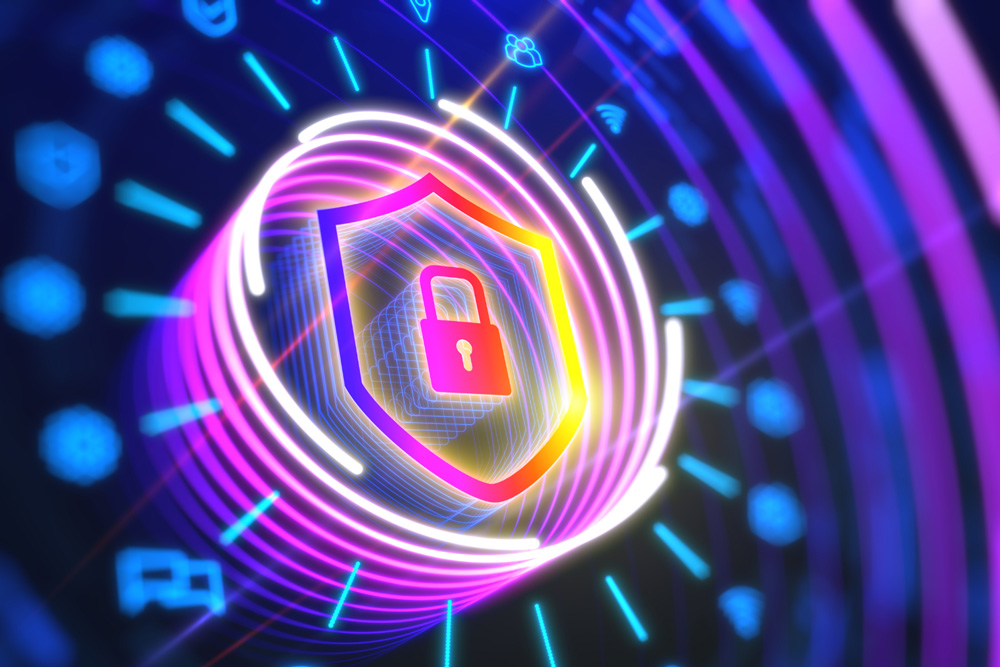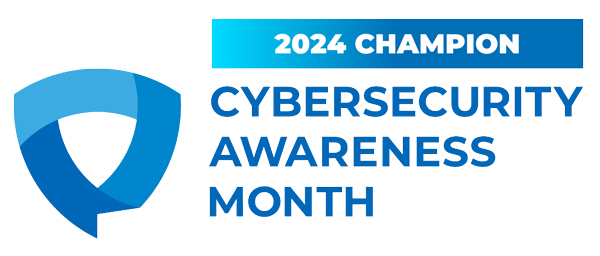Cybersecurity Awareness Month: 4 steps to secure our world

From desktop and mobile devices to smart home appliances, technology is deeply intertwined in our lives. Emerging technologies may benefit our society in many ways, but with new technologies come new opportunities for criminals to disrupt our online activities at home, school, or work.
Cybersecurity Awareness Month (CAM), observed every October since 2004, aims to highlight some challenges that exist in the world of cybersecurity and provide straightforward, actionable guidance that anyone can follow to create a safe and secure digital world for themselves and others.
As a CAM Champion, the University of Utah is proud to support this critically important online safety awareness and education initiative, led by the Cybersecurity and Infrastructure Security Agency (CISA) and the National Cybersecurity Alliance (NCA).
About Cybersecurity Awareness Month
Founded in 2004, Cybersecurity Awareness Month (CAM), observed each October, is the world’s foremost educational initiative aimed at promoting cybersecurity awareness and best practices. CAM highlights the growing importance of cybersecurity in our daily lives and encourages individuals and organizations to take important cybersecurity steps every day to secure our world and stay safe online.
This year’s CAM theme is “Secure Our World,” which encourages all of us to take four easy steps each day to ensure our online safety:
- Use strong passwords and a password manager. Long, complex, and unique passwords help prevent account breaches, and password managers make it easy to keep track of and remember your passwords. Password managers today are safer than ever before — much safer than using a physical notebook, storing passwords in a note-taking app, or reusing passwords that are easy to remember. Compare options and find a reputable program that works for you.
- Turn on multifactor authentication (MFA) wherever possible at home, school, and work. MFA adds a second step to verify your identity when logging in to one of your accounts. By requiring multiple methods of authentication, your account is further protected from being compromised, even if a criminal hijacks your password. In this way, MFA makes it more difficult for password-cracking tools to enable attackers to break into accounts.
- Recognize and report phishing, which is a primary tactic used by cybercriminals who are masters of making their content and interactions appealing. From content design to language, it can be difficult to discern whether content is genuine or a potential threat, which is why it is so important to know the red flags. Awkward and unusual formatting, overly explicit callouts to use a hyperlink or open an attachment, and messages that create a sense of urgency are all hallmarks that the content you received could be a potential phish and should be handled with caution. For more information about phishing, visit the Information Security Office’s Phish Tank webpage.
- Install updates on a regular basis, and turn on automatic updates. When prompted that it’s time to update your apps, operating systems, software, web browsers, etc., it may be tempting to postpone the updates or ignore the messages. However, having the latest upgrades and IT security patches is one of the best defenses against online threats. So, don’t wait, update.
In addition to its awareness and education efforts, the U continues to “Secure Our World” and strengthen the university’s cybersecurity posture with the ongoing implementation of the Unified Cybersecurity Toolset. Tools include network access control (NAC), protect by default at the network perimeter, two-factor authentication (2FA), data loss prevention (DLP), privileged access management (PAM), endpoint detection and response (EDR), and antivirus software. For more details, please visit this Node 4 article.
For more information about CAM and how to participate, visit the CISA CAM page or the NCA CAM page.
Node 4
Our monthly newsletter includes news from UIT and other campus/ University of Utah Health IT organizations, features about UIT employees, IT governance news, and various announcements and updates.

